You’re in for a treat if you like to forage for edible mushrooms and live in an area where hedgehog mushrooms grow.
And, if you are new to mushroom foraging, you don’t need to worry as they are one of the easiest and safest mushrooms to collect.
These delicious and unique mushrooms are extremely popular with both foragers and chefs for their taste and nutritional benefits.
In this article, you’ll discover what a hedgehog mushroom is and where they grow. You’ll also learn how to identify, harvest, clean and enjoy hedgehog mushrooms.
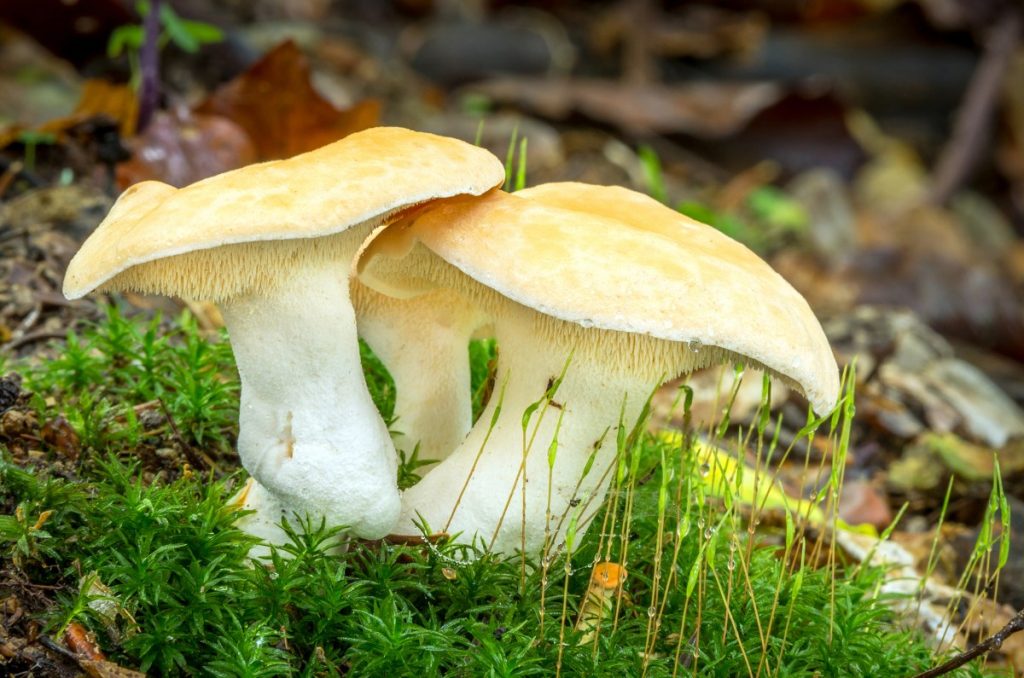
What Is a Hedgehog Mushroom?
The hedgehog mushroom (Hydnum repandum), also called the sweet tooth, wood hedgehog, or pied de mouton (France), is a popular, edible mushroom.
It’s one of several fungi commonly called hedgehog mushrooms, but many consider the Hydnum repandum the true hedgehog mushroom.
Others feel two main species make up hedgehog mushrooms: the Hydnum repandum and the Hydnum umbilicatum.
They have similar characteristics, but the depressed or belly button hedgehog (Hydnum umbilicatum) is smaller than the hedgehog or sweet tooth mushroom (Hydnum repandum).
The Hydnum repandum is the more popular of the two due to its larger size. You need to pick a great deal more belly button hedgehogs to get a decent meal.
Hedgehog mushrooms have a familiar mushroom shape, including a stem and cap. But get their name from their distinctive spore-producing structures.
Instead of gills or pores on the underside of their caps, they have short, vertically hanging spines or teeth.
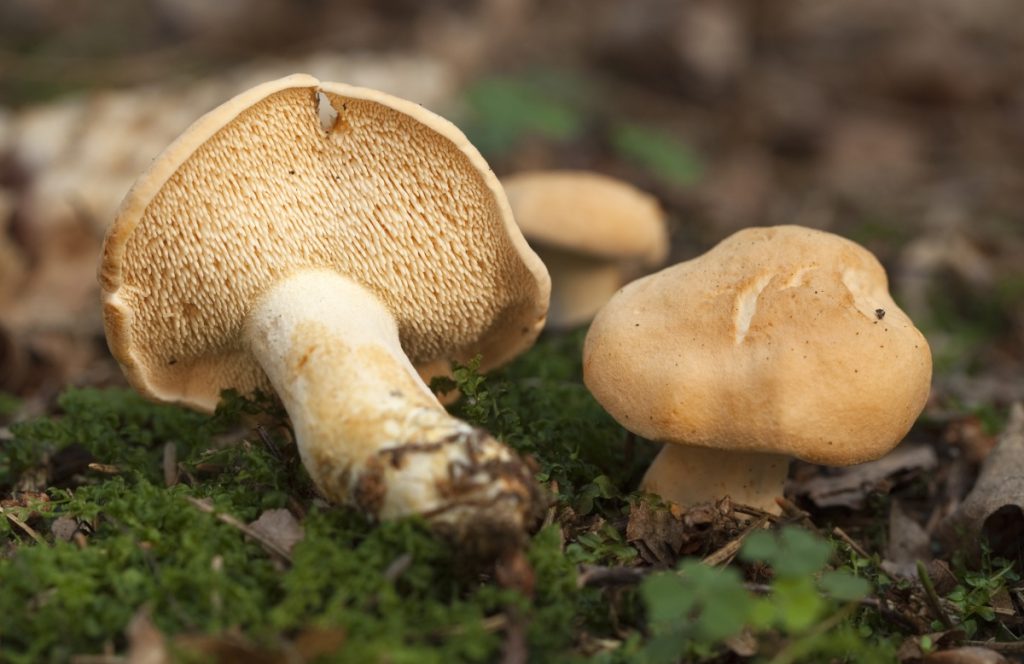
What Do Hedgehog Mushrooms Taste Like?
Hedgehog mushrooms have a somewhat sweet, earthy, nutty taste, with a slightly peppery aftertaste.
Many people consider them one of the most delicious edible fungi, similar in taste to golden chanterelles.
You can eat the entire fruit body of a hedgehog mushroom, including the cap, stem and spines.
They have firm flesh and a crunchy texture that’s slightly chewy when cooked.
Like many other mushrooms, you need to cook hedgehog mushrooms before eating them, and they taste best when still young and firm.
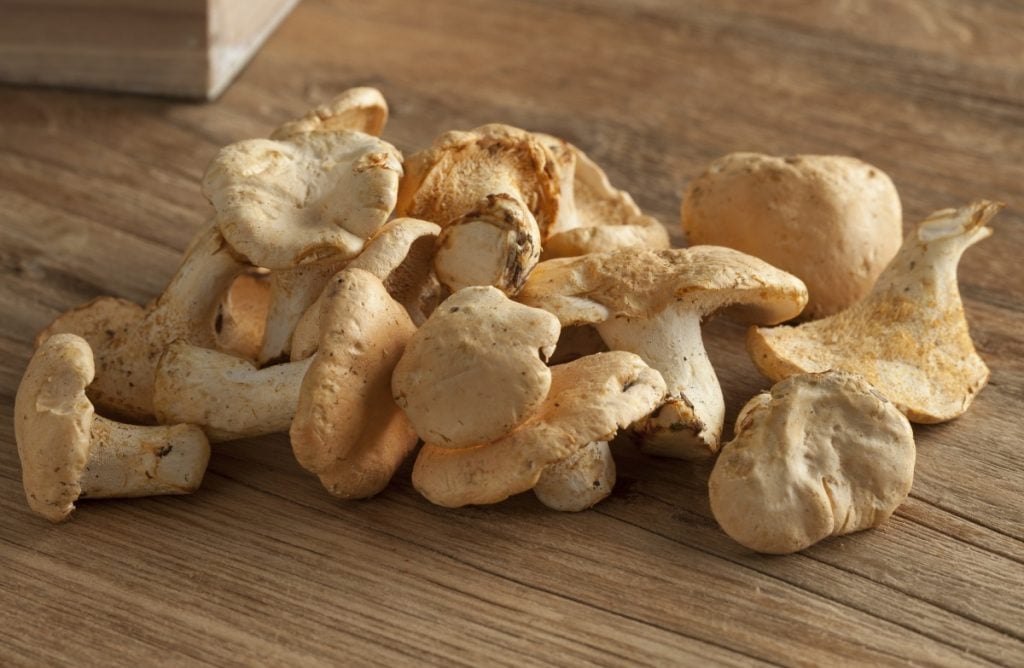
Are Hedgehog Mushrooms Mycorrhizal?
Yes, hedgehog mushrooms are mycorrhizal, meaning they have a mutually beneficial or symbiotic relationship with trees.
The underground mycelium of hedgehog mushrooms connects to tree roots and helps the tree take in minerals and water.
In exchange, the tree provides the hedgehog mushrooms with the carbohydrates or simple sugars that it makes through photosynthesis.
A single fungus can connect to the roots of multiple trees, even of different species.
Its network of mycelium allows the trees to cooperate and pass sugar and information between each other.
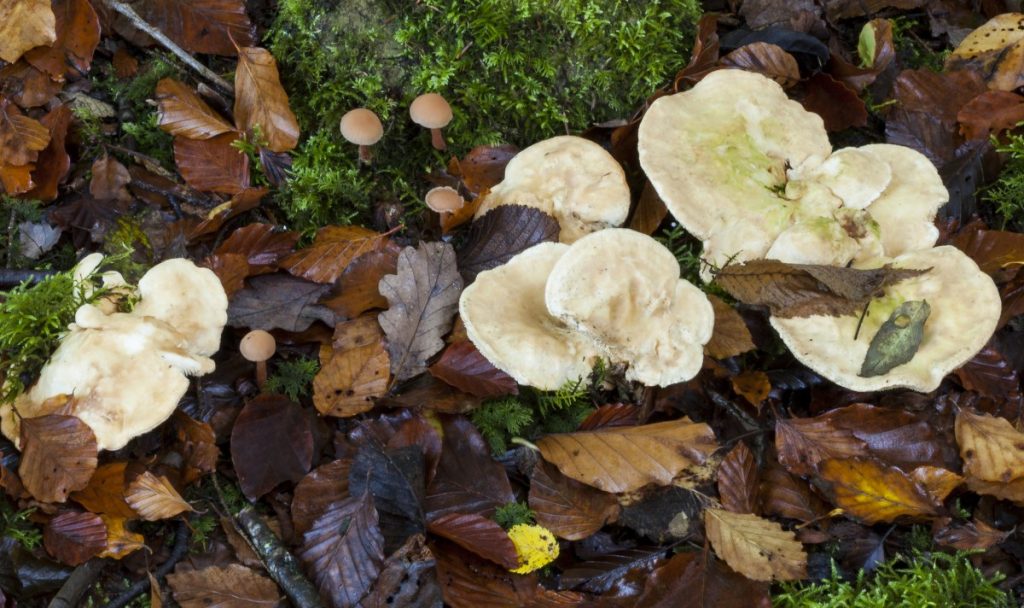
Where Does Hedgehog Mushroom Grow?
Hedgehog mushrooms grow in rings or arcs around host trees in most types of mixed woodland.
They come up loosely scattered singly or in close groups under conifers and hardwoods like spruce, birch, beech and oak.
Hedgehog mushrooms are widespread, and you’ll find them in Britain and Ireland, Canada, Australia, Northern Asia and throughout Europe and North America.
Once you have found a good patch of hedgehog mushrooms, you’ll have an ongoing supply as they come up year after year in the same location.
Can You Grow Hedgehog Mushrooms?
No, you will not be able to grow hedgehog mushrooms at home as they are mycorrhizal.
It’s difficult, if not impossible, to cultivate any mycorrhizal mushrooms as they need their symbiotic relationship with trees to get all the nutrients they require for growth.
Where Can I Get Hedgehog Mushrooms?
You can get hedgehog mushrooms from foragers, at farmer’s markets and in some specialty grocers.
As they’re so difficult to cultivate, it’s best to either find and harvest your own or purchase them from local mushroom foragers.
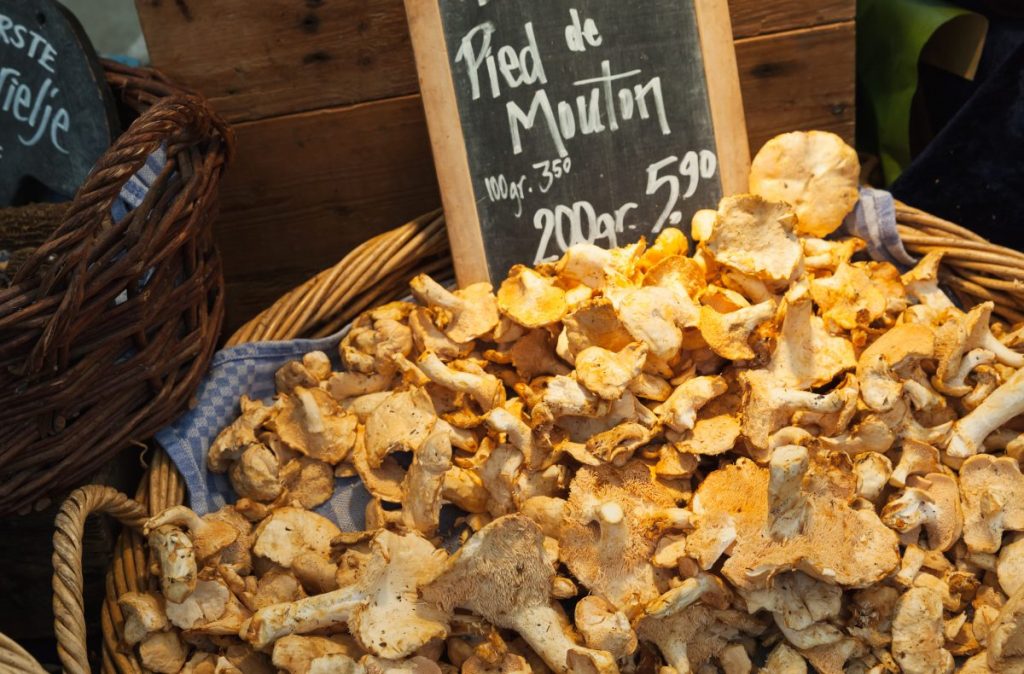
When is Hedgehog Mushroom Season?
Hedgehog mushroom season will vary depending on your geographical location. You’ll find them anywhere from mid-summer through to late winter.
Here are some guidelines for hedgehog mushroom season in different locations.
- Australia – Through winter ( Early June to mid-September)
- Britain and Ireland – Late summer to early winter (August to December)
- Eastern US – Summer and fall (July to November)
- Eastern Canada – Late summer to the end of fall (August to November)
- Europe – Late summer to early winter (August to December)
- Western US – Mid fall to the end of winter (October to February)
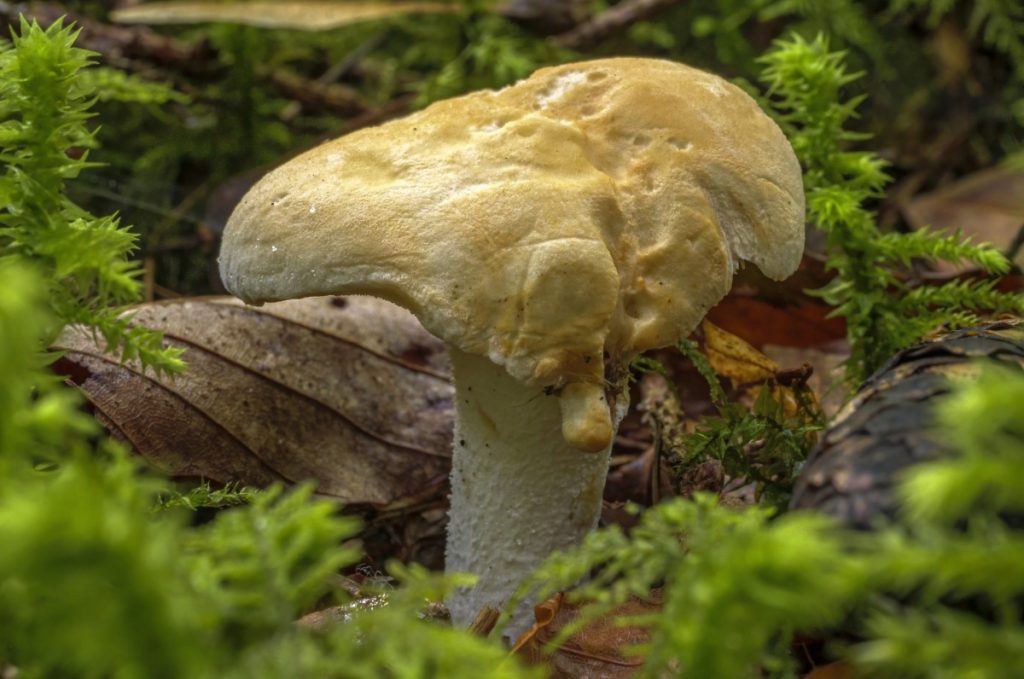
How to Identify Hedgehog Mushrooms
Now that you have a good idea of where hedgehog mushrooms grow and in which season, it’s time to learn how to identify them in the wild.
The wonderful thing about hedgehog mushrooms is their uniqueness, making them easy for new foragers to identify.
Also ideal for beginners is the fact that there are no toxic hedgehog mushroom look-alikes.
Here’s what to look for when identifying the hedgehog or sweet tooth mushroom (Hydnum repandum):
Cap
The cap is pale creamy yellow to salmon pink, anywhere from 1.5 – 8 inches (4 – 20 cm) across with an irregular amoeba-like shape.
It is convex when the mushroom is young, becoming flat with a wavy edge when older. The surface is often uneven and can be slightly depressed in the middle.
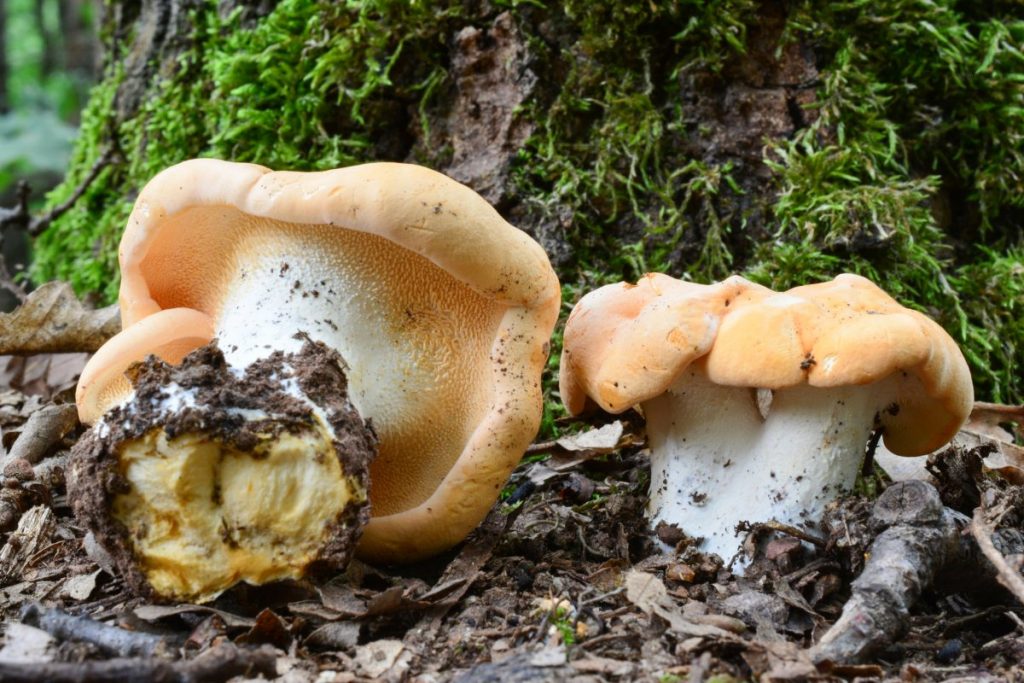
Spines
Densely packed, soft spines or teeth cover the underside of the cap and continue down the stem for a short distance.
They’re creamy-white to soft salmon pink, round in a cross-section, 0.8 – 2.4 inches (2 – 6mm) long and one of the most distinguishing features of the hedgehog mushroom.
The spines are easily detachable and will break off the cap if you run your finger over them.
Stem
The stem is usually 1.2 – 2.4 inches (3-6cm) long and 0.8 – 1.2 inches (1-3cm) thick. With an irregular stumpy shape sometimes enlarged at the base.
It’s smooth and creamy white or the same color as the cap and does not have a partial veil or ring. Sometimes attached centrally to the cap but often slightly off-center.
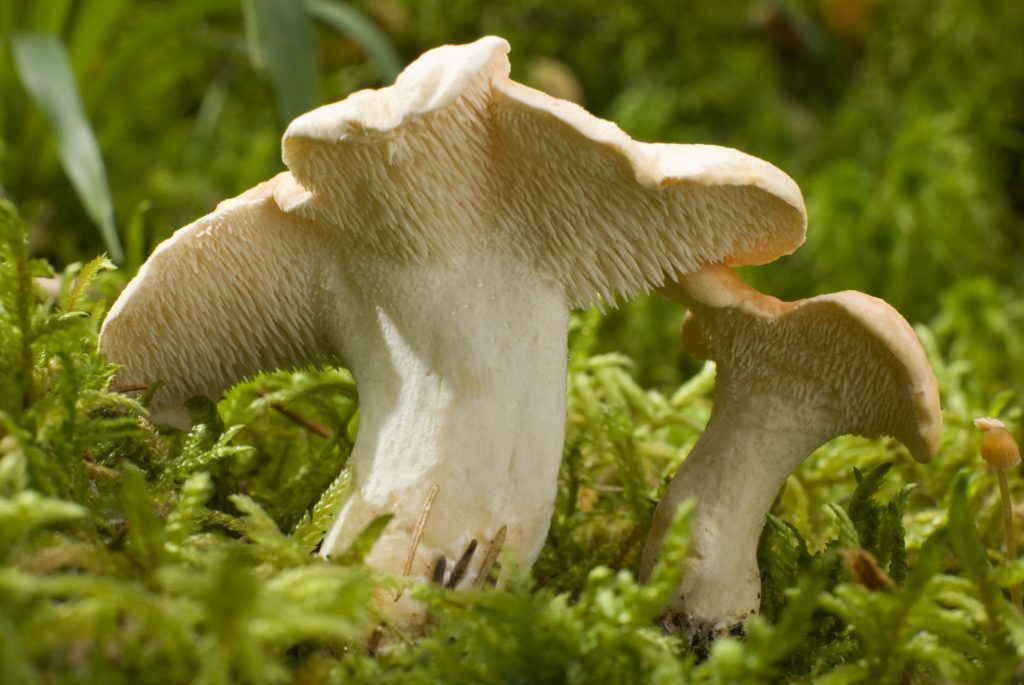
Types of Hedgehog Mushroom
Apart from the hedgehog or sweet tooth mushroom (Hydnum repandum), several other edible mushrooms are commonly known as hedgehog mushrooms.
Here are some of the more popular and well-known varieties.
- The depressed hedgehog or belly button hedgehog (Hydnum umbilicatum) is found in North America and Europe, growing in bogs and swamps. It’s very similar to the sweet tooth but smaller and darker in color. Additionally, the cap of this mushroom is more regular in shape and depressed in the middle like a belly button, giving it its name.
- The terracotta hedgehog (Hydnum rufescens) is found in Europe and is smaller than the sweet tooth. Its cap is russet or terracotta colored and more regular in shape with a central stem. On the underside, their spines do not continue down the stem.
- The white hedgehog (Hydnum albidum) is native to North America. It has a white to pale grey fruit body that bruises yellow to orange and is smaller than the sweet tooth. On the underside, the white spines do not run down the stem.
- The giant or spreading hedgehog (Hydnum albomagnum) is native to North and Central America and is larger and paler than the other hedgehog mushrooms.
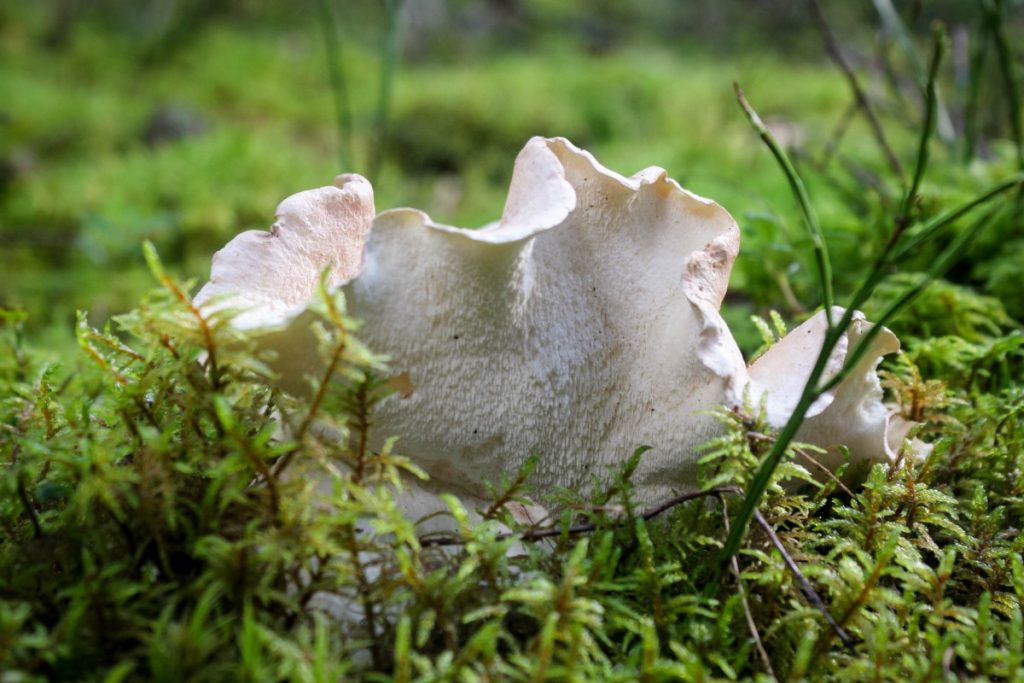
Hedgehog Mushroom Look-Alikes
Here are two hedgehog mushroom look-alikes that you may encounter:
- Drab tooth (Bankera fuligineoalba)
The drab tooth is an inedible, but not poisonous look-alike. It’s found under conifers and is similar in appearance to the sweet tooth but with a fawn-colored cap and teeth.
The cap is velvety in texture instead of smooth and usually has a layer of pine needles and organic debris stuck to it.
- Scaly hedgehog (Sarcodon imbricatus)
The scaly hedgehog is an edible look-alike with distinctive raised brown scales on the cap.
These mushrooms get very large, and their caps reach up to 12 inches (30cm) in diameter. On the underside of the light brown to grey cap, they have soft pale grey teeth 0.2 – 0.6 inches (0.5 – 1.5 cm) long.
The scaly hedgehog is found from August to October throughout Europe and North America growing in rings under fir trees.
While these look-alikes have spines on the underside like hedgehog mushrooms, they do not have the same smooth, pale creamy white to salmon-pink caps. Thus it’s not too difficult to tell them apart.
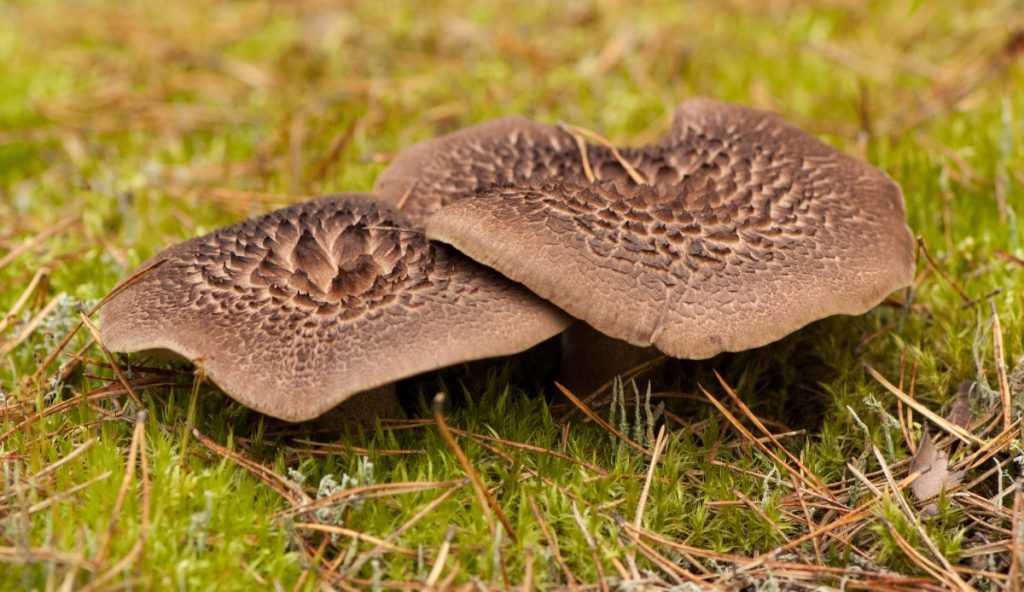
How to Harvest Hedgehog Mushrooms
It’s a good idea to take a knife along when harvesting hedgehog mushrooms.
Although their stems snap easily, cutting them with a knife may help to reduce the amount of dirt or debris you get into your basket.
The base of the hedgehog stem often has dirt attached to it that you cannot easily brush off. You can cut this section off before you put the hedgehog mushroom in your basket.
Or, If you want to save as much of the delicious flesh as possible, use your knife and trim the dirty bits off the base of the stem in the same way you would sharpen a pencil.
Additionally, if the stem is very dirty all the way up, gently scrape it to remove as much dirt as possible. But be gentle as the stem and cap are brittle and break easily.
You want to minimize the amount of dirt that gets into the hedgehog mushrooms teeth while harvesting. A basket of hedgehog mushrooms covered in soil and debris is not easy to clean.
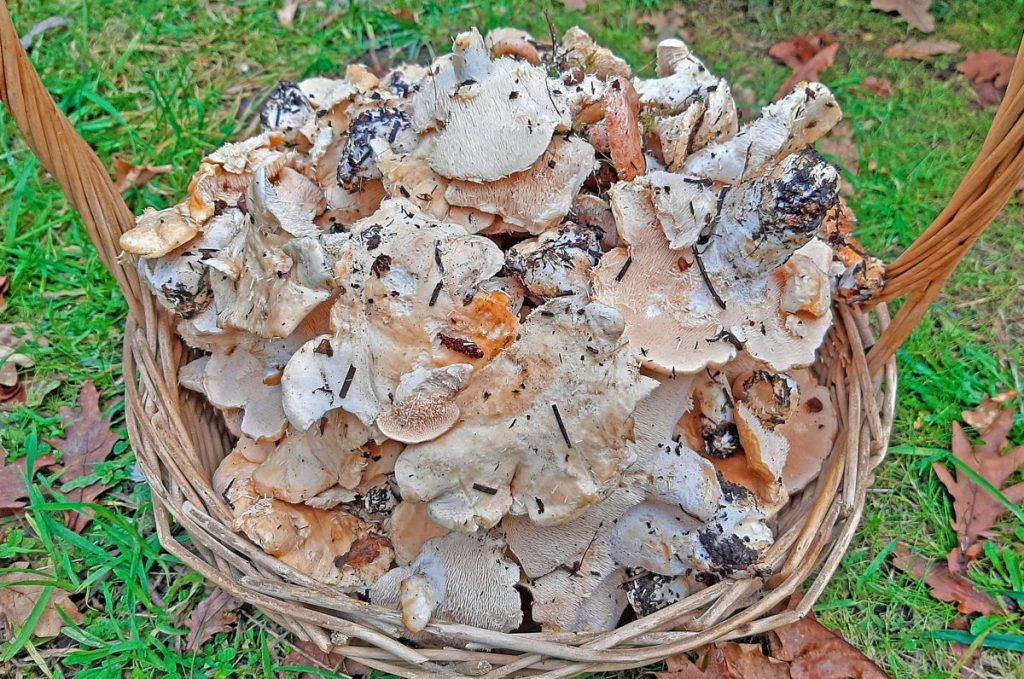
How to Clean Hedgehog Mushrooms
Hedgehog mushrooms can be slightly more challenging to clean than other mushrooms as dirt and grit can get stuck in the teeth on the underside of the cap.
Fortunately, hedgehog mushrooms are unappealing to bugs and worms, so you usually only need to remove dust and a bit of debris.
To remove particles between the teeth, try holding the hedgehog mushroom by the stem and gently tapping the top of the cap.
Larger particles will usually fall out. You can also gently brush the dirt out of the teeth with a mushroom or pastry brush.
If they’re still not clean, a quick dip in some cool water should do the trick, but this is seldom necessary. Try not to leave the mushrooms in the water too long as they will become waterlogged.
Some people prefer to scrape the teeth off mature hedgehog mushrooms, especially if they’re picked just after a rainstorm and have lots of dirt lodged in the teeth.
To do this, gently push the teeth flat with your thumb and wipe or rub them off.
If you’re planning on blanching and freezing your hedgehog mushrooms, you don’t need to bother, as the teeth will fall off while cooking.
How to Store Hedgehog Mushrooms
Hedgehog mushrooms have a long shelf life and will store well in the fridge for two to three weeks.
Like other mushrooms, you should not store your hedgehog mushrooms in airtight containers. Paper bags are better than plastic bags or containers.
Paper bags will allow the mushrooms to breathe and absorb excess moisture keeping them fresher for longer.
If you have excess hedgehog mushrooms, you can saute or blanch them and freeze them for future use.
You can also dry hedgehog mushrooms, but it’s not recommended unless you want to make hedgehog mushroom powder, as their texture and flavor change when they are re-hydrated.
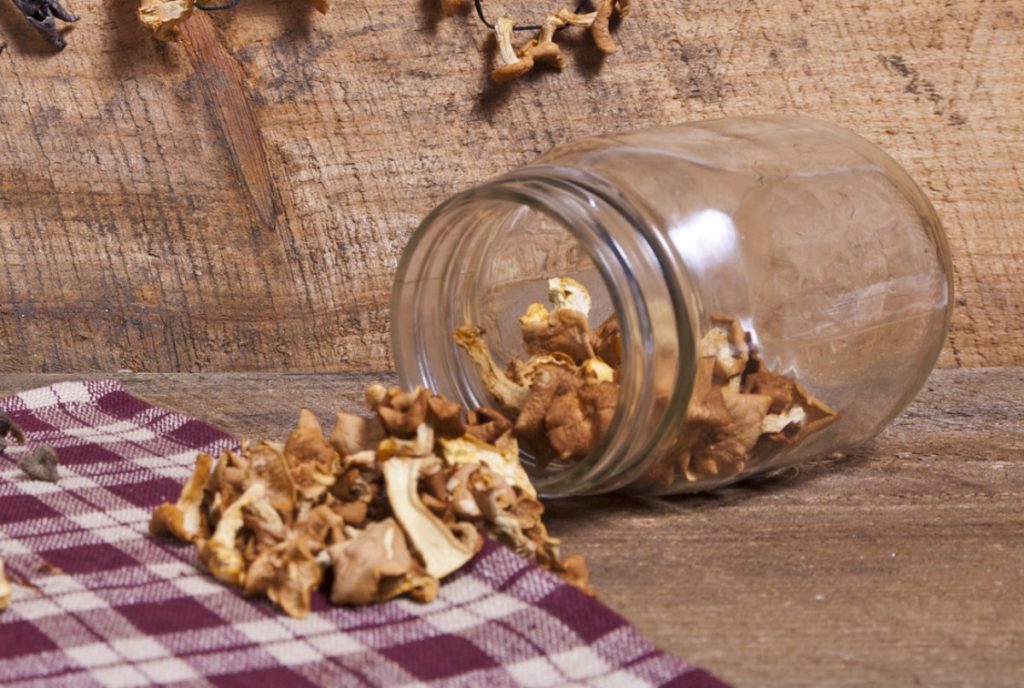
How to Cook Hedgehog Mushrooms
Hedgehog mushrooms have numerous delicious culinary applications and a host of nutritional benefits.
One of the best ways to enjoy hedgehog mushrooms is to sauté them in butter or olive oil with a touch of garlic and serve them over steak or pile them on toast.
Like chanterelles, hedgehog mushrooms make a great addition to soups. They’re also excellent in tomato, white wine or cream-based sauces and are often used in casseroles, pot pies, tarts and stir-fries.
The hedgehog mushrooms’ firm flesh makes them ideal for pickling or canning and preserves their texture and taste successfully.
Try this easy and delicious kale and hedgehog mushroom recipe for a light, nutrient-packed meal or side dish.
Kale and Hedgehog Mushroom Salad
Ingredients
- 2 bunches of kale
- 2 tbsp lemon juice
- 1 lb (450 g) fresh hedgehog mushrooms
- unsalted butter
- olive oil
- Salt and fresh cracked pepper
Instructions
- Rough chop the hedgehog mushrooms and sauté them in butter with a little olive oil.
- Wash and rough chop the kale.
- When the hedgehogs take on color and become tender, add the kale and lemon juice. Continue to sauté just until the kale has wilted.
- Add a tablespoon or two of butter and toss.
- Sprinkle with salt and fresh cracked pepper to taste, and serve.

Nutrition and Health Benefits of Hedgehog Mushrooms
Hedgehog mushrooms are most often consumed for their nutritional benefits as they’re extremely nutritious and an excellent source of iron for people who don’t eat meat.
They’re low in fat and high in protein with high levels of several dietary minerals, especially copper, iron and manganese. They’re also a good source of magnesium, calcium, and zinc.
The combination of nutrients in hedgehog mushrooms makes them helpful for strengthening bones, regulating blood clotting and nerve functions, increasing energy and cell proteins and fighting off viruses.
Hedgehog mushrooms also have some medicinal benefits as they contain antioxidants that combat oxidative stress and thus can help to prevent cancer and cardiovascular diseases.
Final Thoughts
Hedgehog mushrooms are unique and delicious and the perfect mushroom for beginner foragers.
But, they’re not the only edible mushrooms you can enjoy for their flavor and health benefits. There are several other types of culinary and medicinal mushrooms that you should also try.
Our Mushroom Education Resource Hub has numerous articles to help you discover the magical world of mushrooms.
And, If you really enjoy your mushrooms, then you may want to consider growing mushrooms at home. A mushroom growing kit is a great way to get started.
